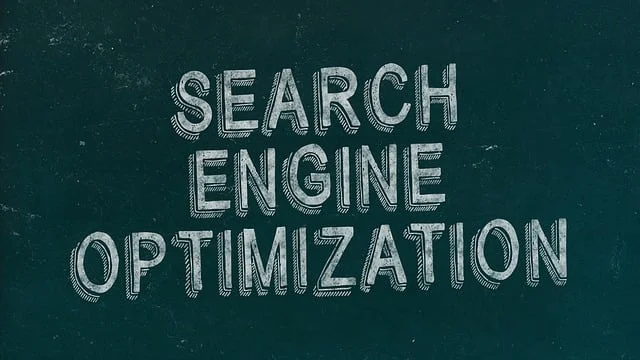In the digital landscape of 2024, having a robust Search Engine Optimization (SEO) strategy is more crucial than ever for businesses aiming to enhance their online visibility and drive organic traffic to their websites. In this comprehensive guide, we’ll delve into the intricacies of creating an SEO strategy tailored to the demands of the current digital environment.

Understanding SEO Strategy
Before delving into the specifics, let’s first establish a clear understanding of what an SEO strategy entails and its significance in the realm of digital marketing.
What is an SEO Strategy?
An SEO strategy is a meticulously planned approach aimed at optimizing a website’s visibility in search engine results pages (SERPs) through a combination of on-page and off-page tactics. It involves various techniques and methodologies designed to enhance a website’s search engine rankings, thereby increasing its online presence and driving targeted traffic.
Mobile SEO Strategy: Optimizing for the Mobile

With the exponential rise in mobile device usage, optimizing your website for mobile search has become imperative. Here’s how to craft an effective mobile SEO strategy:
Understanding Mobile SEO
Mobile SEO focuses on optimizing a website’s performance and user experience on mobile devices such as smartphones and tablets. It involves ensuring that the website is mobile-friendly, loads quickly, and provides a seamless browsing experience across various screen sizes.
Key Mobile SEO Strategies
- Implement responsive web design to ensure your website adapts seamlessly to different screen sizes and devices.
- Optimize page speed by minimizing file sizes, leveraging browser caching, and reducing server response times.
- Prioritize mobile usability by optimizing touch elements, ensuring readability, and simplifying navigation.
SEO Strategy for Beginners: A Step-by-Step Guide
Embarking on your SEO journey can be daunting, especially for beginners. Here’s a step-by-step guide to kickstart your SEO strategy:

1. Search For Your Company’s Head Term on Google
Start by identifying your primary target keyword or “head term” and conduct a Google search to assess your current ranking and competition.
2. Look at Google’s Suggested Searches and Filters
Explore Google’s suggested searches and filters related to your head term to gain insights into user search intent and identify potential long-tail keywords.
3. Examine the SERPs

Analyze the search engine results pages (SERPs) for your target keyword to understand the types of content that rank well and identify opportunities for optimization.
4. Analyze Your Competition
Conduct a competitive analysis to identify your top competitors and analyze their SEO strategies, including keywords, content, and backlink profiles.
5. Generate Online Authority
Focus on building your website’s online authority through high-quality content, reputable backlinks, and a strong social media presence.
6. Create Search Engine Optimized Content
Craft high-quality, SEO-friendly content that addresses user search intent and incorporates relevant keywords naturally.
SEO Content Strategy: Crafting Engaging and Optimized Content

Content is the cornerstone of any successful SEO strategy. Here’s how to develop an effective SEO content strategy:
1. Make a list of topics:
Identify topics relevant to your target audience and industry niche, focusing on providing valuable and informative content.
2. Make a list of long-tail keywords based on these topics:
Conduct keyword research to identify long-tail keywords related to your chosen topics, considering search volume and competition.
3. Build pages for each topic:
Create dedicated landing pages or blog posts for each topic, optimizing them for the corresponding long-tail keywords.
4. Set up a blog:
Establish a blog section on your website to regularly publish fresh, engaging content that attracts and retains visitors.
5. Create a consistent blogging schedule:
Maintain a consistent posting schedule to keep your audience engaged and demonstrate your industry expertise.
6. Create a link-building plan:
Develop a link-building strategy to acquire high-quality backlinks from authoritative websites, boosting your website’s credibility and SEO rankings.
7. Compress media files before uploading them to your site:
Optimize image and media files by compressing them to reduce page load times and improve overall site performance.
8. Stay up-to-date on SEO news and best practices:
Stay informed about the latest SEO trends, algorithm updates, and best practices to adapt your strategy accordingly and maintain your competitive edge.
9. Measure and track your content’s success:
Utilize analytics tools to monitor the performance of your content, track key metrics such as traffic and engagement, and make data-driven optimizations.
Crafting an Effective SEO Report: Demonstrating ROI and Performance
As part of your SEO strategy, regularly compile and analyze comprehensive SEO reports to assess the effectiveness of your efforts and demonstrate ROI to stakeholders.
Key Components of an SEO Report:
- Organic traffic metrics: Track changes in organic traffic, including total visits, new users, and returning visitors.
- Keyword rankings: Monitor keyword rankings across search engines to gauge visibility and performance.
- Backlink analysis: Assess the quality and quantity of backlinks to your website and identify opportunities for improvement.
- Content performance: Analyze the performance of individual pieces of content based on metrics such as page views, time on page, and bounce rate.
- Conversion tracking: Track conversions and goals to measure the impact of SEO efforts on business outcomes.
SEO Process: Implementing a Structured Approach
Implementing an effective SEO strategy requires a structured approach encompassing various stages and processes. Here’s an overview of the SEO process:
- Research and Analysis: Conduct thorough keyword research, competitor analysis, and website audits to identify opportunities and challenges.
- Strategy Development: Develop a comprehensive SEO strategy tailored to your business goals, target audience, and industry landscape.
- On-Page Optimization: Optimize on-page elements such as meta tags, headings, and content for improved search engine visibility.
- Off-Page Optimization: Implement off-page tactics such as link building and social media marketing to enhance your website’s authority and reputation.
- Monitoring and Optimization: Continuously monitor and analyze performance metrics, refine your strategy, and adapt to algorithm changes and industry trends.
- Reporting and Analysis: Regularly compile and analyze SEO reports to track progress, identify areas for improvement, and demonstrate ROI to stakeholders.
Create A Strategy That Supports Your Business Goals: Aligning SEO with Business Objectives
Ultimately, the success of your SEO strategy hinges on its alignment with your broader business goals and objectives. Here are key considerations for creating an SEO strategy that supports your business goals:
- Identify Key Performance Indicators (KPIs): Define measurable KPIs that align with your business objectives, such as increased website traffic, lead generation, or revenue growth.
- Tailor Your Approach: Customize your SEO strategy to cater to the unique needs and priorities of your business, industry, and target audience.
- Integration with Other Marketing Channels: Integrate your SEO efforts with other digital marketing channels such as content marketing, social media, and email marketing to maximize impact and synergy.
- Regular Performance Evaluation: Continuously evaluate the performance of your SEO strategy against established KPIs, making data-driven adjustments as needed to optimize results.
Conclusion
In conclusion, crafting an effective SEO strategy is essential for businesses looking to enhance their online visibility, attract targeted traffic, and achieve their business objectives in the competitive digital landscape of 2023 and beyond. By following the comprehensive guide outlined above, including mobile SEO strategies, content optimization techniques, and performance tracking methodologies, businesses can develop a robust SEO strategy that drives sustainable growth and delivers tangible results.
